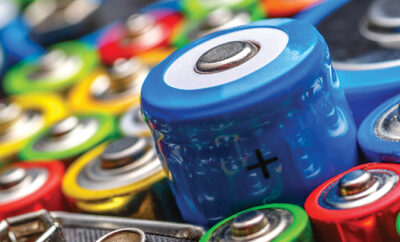
Recycling Right!
Have you ever stood in front of a recycling bin and wondered if the plastic container in your hand goes there or in the trash? Most of us want to do our part to help the environment, but the symbols used on many recycling bins are confusing. Sometimes it feels as if you need an expert to know the right way to recycle.
The Environmental Protection Agency reports that the nation’s recycling rate has grown from around 7 percent in 1960 to 32 percent in 2019. This is good, but more progress is needed. One of the biggest barriers to recycling correctly has been the lack of a national recycling strategy. For decades, local governments have been tasked with providing households and business with information about what to recycle and where to take it.
According to the EPA, “Most Americans want to recycle, as they believe recycling provides an opportunity for them to be responsible caretakers of the Earth. However, it can be difficult for consumers to understand what materials can be recycled, how materials can be recycled, and where to recycle different materials. This confusion often leads to placing recyclables in the trash or throwing trash in the recycling bin or cart.
Imagine if traffic symbols such as stop signs were different in every city or neighborhood; this is the situation the U.S. has faced for decades with recycling symbols. The symbols and wording used on recycling bins weren’t standardized. Confusion over which bin to use often ruined the best of intentions, sending items suitable for recycling to landfills instead.
Michelle “Mitch” Hedlund, a Minnesota businesswoman and environmentalist, viewed the general confusion about recycling as a labeling problem. Reasoning that more people would recycle correctly if it were easier, she decided to fix the labels on recycling bins.
Nearly a decade ago, Hedlund formed the non-profit group Recycle Across America, or RAA, to design and promote standardized recycling labels for indoor and outdoor bins. The labels use standard colors, images and language. They also can be customized to include additional instructions and the name of the organization doing the recycling. RAA reports that using standardized labels is proven to increase recycling rates by 50 to 400 percent. More than 8 million of the organization’s labels are now being used on bins in schools, airports, retail stores and other public spaces.
Today, the efforts of recycling group such as RAA are more important than ever. China, once a destination for much of the nation’s recycled material, enacted regulations in 2017 that ban paper and plastic items contaminated by food and other substances. When China stopped importing most recycled materials, global recycling markets were seriously disrupted. Recognizing the urgency of the situation and the need for “cleaner” recycling, Congress is considering the Let’s Recycle Right bill of 2020, currently in the House Committee on Energy and Commerce. Having the correct labels on bins goes a long way toward ensuring that recycling material is clean when collected, so the legislation mandates the use of standardized labels.
Not knowing where to take different types of materials for recycling is an issue for both households and businesses. The organization Recycle Nation addresses that problem with a website that provides recycling information and resources. A smartphone app is also available. Recycle Nation is sponsored by Electronic Recycling International, a large electronics disposal and recycling company.
Using Recycle Nation’s Recycle Search feature, you can look for nearby recycling locations that accept specific materials. Recycle Nation’s database has more than information on more than 100,000 recycling locations for 50 different types of materials. Since recycling programs are run at the state and local level, you can also research state and federal regulations and agencies that deal with community recycling.
Increasing the nation’s recycling rate is more important than ever. Exporting materials for recycling is no longer feasible and there’s growing demand for domestic markets for recycled materials. The EPA is finally addressing the need for national policy by introducing a draft National Recycling Strategy that aims to reduce contamination of recycled materials, increase recycling efficiency and improve the domestic recycling markets.
The EPA promotes recycling with its annual America Recycles Day on November 15, and it encourages us to think about recycling every day as we go about our businesses and lives. If you’re part of a recycling program in your community, make sure you understand what goes in your bins; foods, liquids, straws, plastic bags, batteries and electronics should never go in curbside recycling. When you’re not sure if an item is recyclable, call your recycling provider or visit epa.gov/recycle or recyclenation.com. If you don’t have time to check, Recycle Across America says, “When in doubt, throw it out.” Avoid contamination by letting it go to the landfill. ■
Sources: epa.gov, forbes.com, recycleacrossamerica.org, recyclenation.com and waste360.com.







